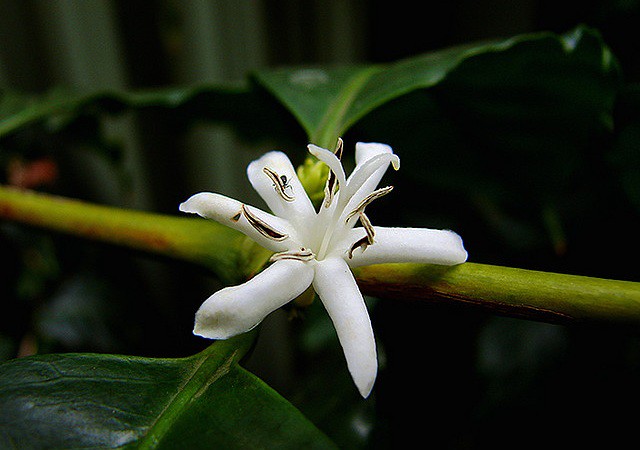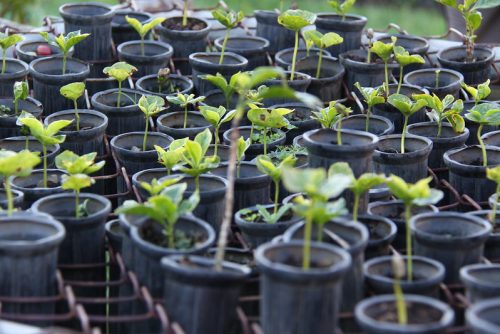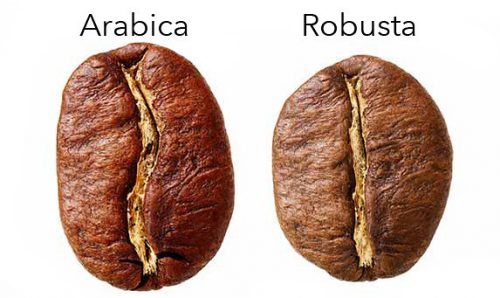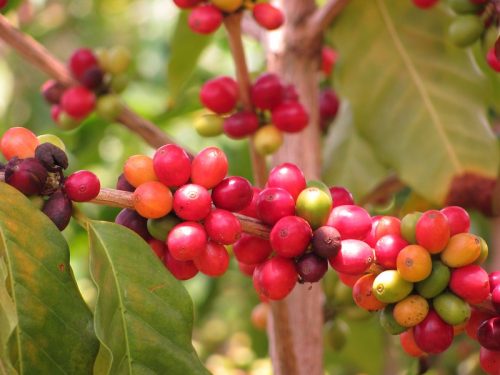What Is Arabica Coffee And Why Is It So Popular?

You have surely heard the “Arabica” name next to coffee. It is everywhere from the coffee bags at grocery stores to your favorite cafe. And you may have rightfully wondered what this name means. It is exactly what we are going to find out in this article.
Arabica coffee is simply coffee made using a specific type of coffee beans, called “Arabica”. These beans take the name from the species of the plant that produces them, the coffea Arabica. This plant is only one among a few tens of the coffea gene that constitutes the plants that we collectively call “the coffee plant”. There are thus many of these species, similarly as there is not only one species of roses or orange trees.
Arabica is the most cultivated one worldwide, making around 60% of the total production of coffee. That’s a lot, and the reason is simple: Arabica beans are the most flavorful and sweet of them all, the ones that consistently brew the most awarded coffee in the world, the ones that are the most appreciated by experts and coffee fans alike.
The name is a bit of a misnomer. Actually, the Arabica coffee plant grew naturally in Ethiopia. It was in the 15th century that Arab merchants discovered the properties of the coffee and brought the beans to Yemen, on the other side of the Red Sea compared to Ethiopia.
From there they started roasting and brewing it, exporting the coffee throughout the Arab world and then to Europe. The name “Arabica” then only refers to where the Europeans bought the coffee, not where it was cultivated.
Coffee Types
In nature, even before man bred new species, many types of the coffee plant existed. As we have seen, Arabica coffee is only one, the most popular one. It furnishes a large part of the coffee production and most probably the last cup of coffee you had was made with Arabica beans.
The other 40% of the world production is made of other types of coffee. The second most widespread after Arabica coffee is Robusta. More correctly called coffea Canephora, it was originally present only in western and central sub-Saharan Africa.
Nowadays it is cultivated anywhere from Brazil to Kenya to Vietnam. Together with Arabica coffee, these two coffee types make up about 98% of all the coffee beans sold worldwide.

The other 2% is made primarily of two other species: coffea Stenophylla and coffea Liberica. Stenophylla is mostly found on the West African coast, in the more humid and rainfall-affected areas, while Liberica was also originally from West Africa but today is cultivated in many parts of the world.
Indonesia and Philippines are the two main producing countries of Liberica coffee. Both these species have little importance, though, compared to Robusta and Arabica coffee.
Arabica vs Robusta
Why did the world of coffee focus so much on Robusta and Arabica? Knowing that there are plenty of coffee species, the question begs asking.

The primary reason is the taste: both taste better than most of the other coffee species. They are both able to produce excellent coffee, with Arabica coffee being the most widely praised. Arabica coffee is sweeter and has a more pronounced acidity, with a wider range of flavors that can be tasted in the cup.
Plenty of nuanced flavors in a coffee made with Arabica beans. Arabica does not have a heavy body, usually, and has a moderate amount of caffeine compared to Robusta (about half). It is thus delicious and not too intense, perfect for most drinkers.
There are some advantages to Robusta too. It is easier to cultivate, being more resistant to diseases and more tolerant to different climates. Arabica coffee has a very limited area where it can grow, while Robusta is more accepting of drier and hotter weather.
Further, Robusta has more body, which is a quality very appreciated by espresso drinkers among the others, and is higher in caffeine. Robusta may lack something in flavors but is an excellent coffee type to have when you want a strong, heavy cup of coffee.
Where does it grow?
The Arabica coffee plant doesn’t like frost and arid climates. It needs lots of humidity and warm temperatures to thrive. Cold nights can kill the plant.
It is no wonder then that Arabica coffee is grown in subtropical areas of the world, especially on hills and on the slopes of mountains where the temperature is never torrid but not so high as the plant will have to face frosting.

Think about elevations of 1900+ feet over the sea. It is thus popular to grow Arabica coffee anywhere where there is a hot climate and some mountains. Countries like Colombia, Brazil, all the Central American ones, Peru, Kenya, Tanzania, Ethiopia, India, Indonesia and plenty of small, tropical, islands, are a perfect environment for the coffea Arabica variety to grow.
The vast majority of the Arabica coffee production comes from the countries just mentioned, which all have subtropical climate and lots of cultivable areas that are not on plains.
Whenever those two factors are present, there’s potential to grow excellent Arabica coffee.
Popularity
Arabica coffee has grown to mean “quality coffee”, which is only partly true. Not all the Arabica beans, and thus the Arabica coffee made with them, is excellent. A great coffee depends on a plethora of factors than just using Arabica beans is not enough to guarantee that you are going to drink a superb cup of coffee.
If you brew it incorrectly, you will still have a bad tasting coffee despite using the best Arabica coffee beans you can find.
Arabica beans have on average more sugars, better acidity, more flavors and a moderate amount of caffeine that renders them the best coffee beans you can buy (with ease). These qualities have made Arabica coffee extremely popular.
At auctions of coffee worldwide the best rated beans are consistently Arabica ones, scoring the most points: in a system that goes from 0 to 100, it is not unusual to see Arabica coffee that are rated over 80 or 90. Rarely do Robusta beans score that high.
Of course being that valued and popular makes Arabica coffee also more expensive. Like the best wines can cost you hundreds of dollars more than a table wine, Arabica coffee blends are more expensive than ones that mix Robusta in as well. Quality has its costs, obviously.
Health benefits
Arabica coffee is not only excellent in taste but possesses some health benefits that are worth noting:
- It contains plenty of antioxidants.
- Caffeine content is high but not as high as Robusta, making it ideal for those who want to stay alert but fear not being able to sleep at night
- It is very low in calories.
- Contains plenty of minerals like niacin, magnesium, riboflavin, manganese, and potassium.
- You can make an excellent skin scrub with the used coffee grounds (ok, this is true for any type of beans).
- Drank in moderation, Arabica coffee was found to have beneficial effects for the heart and being capable of preventing cardiovascular diseases